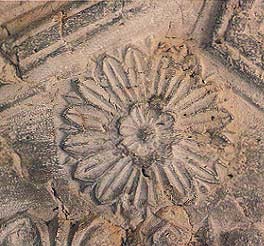Excavating in the Shadow of the Temple Mount
020

021
It should have been the jewel in Israel’s archaeological crown. In fact, Israel’s excavation of the area adjacent to Jerusalem’s Temple Mount, on the south and southwest sides of the sacred precinct, has been the subject of continuing controversy and criticism. Excavation results have been spectacular, true, but they fall short of what might have been—indeed, what should have been.
022
Even before pickax broke earth, resistance to the excavation came—this will seem ironic only to the uninitiated—from Israel’s twin-headed Chief Rabbinate. But for this resistance, the dig might have begun at the so-called Wailing, or Western, Wall of the Temple Mount, a site Jews have venerated for centuries. The Sephardia chief rabbi was fearful that the archaeologists might prove that the Wailing Wall was not the western wall of the Temple Mount—and besides, it was holy ground anyway. The Ashkenazib chief rabbi had other fears: What if the archaeologists found the Ark of the Covenant? “That would be wonderful!” exclaimed Hebrew University’s Benjamin Mazar, the director of the projected dig. Not at all, said the rabbi: Since Jews of this generation are not “pure” in terms of religious law, they are forbidden to touch the Ark of the Covenant. Excavation would be unthinkable until the Messiah comes!
Excavation began—at the southern rather than at the western wall of the Temple Mount—by using a deliberate diversionary tactic. The archaeologists occupied some vacant rooms in a building south of the Temple Mount that was being used by the Rabbinical High Court. The Sephardi chief rabbi ordered the archaeologists to vacate the rooms. Meanwhile, the excavation began outside. A full-blown public dispute developed between the archaeologists and the Rabbinate—but over the rooms; no one seemed to notice the dig outside. The archaeologists held their ground, in the rooms, for several days until they had 80 people outside excavating. Finally, they gave in to the rabbis and vacated the rooms. The dig, however, was now a fait accompli. It was, however, confined to the southern wall and that part of the western wall south of the Jewish prayer area.

Arabs also objected to the dig. The Moslem authorities feared it would yield “Jewish” discoveries that would be used to show who the “original owners” of the site were.
The relationship between the archaeologists and the Moslem authorities was a curious one. It is true that the local Moslem authorities never actually came around to supporting the excavation. But over the years, their attitude slowly changed from opposition to cooperation, at least beneath the surface. On the other hand, the international Arab community, through the United Nations, continued to press annually for condemnation of Israel because of its archaeological activities near the Temple Mount.
Meir Ben-Dov, field director of the excavation, in an introductory chapter to his fascinating new book on the dig,c explains why the opposition of the local Moslem authorities gradually dissipated: One of the earliest discoveries of the excavation was an Omayyad palace built in the seventh or eighth century A.D. by Moslem rulers of Jerusalem. Ben-Dov invited the Moslem notables to view his finds. They saw the care taken to preserve these Islamic walls, which still stood as a glorious monument to a vigorous and largely unknown period of Jerusalem’s history under Moslem rule. This visit dispelled many of the fears the Moslem notables had previously expressed. Thereafter they regularly toured the excavations and even allowed the archaeologists to explore and study otherwise inaccessible, Moslem-controlled areas under the Temple Mount. The archaeologists for their part scrupulously adhered to the Moslem prohibition against excavating under the Temple Mount.
As it turned out, the dig revealed extremely rich finds from the periods of Moslem rule, filling in large gaps in Moslem history. The Israeli archaeologists have not slighted the Islamic periods in any way. The Islamic remains have been preserved on the site, and over 100 pages in Ben-Dov’s book are devoted to Moslem history and to the archaeological finds that illuminate that history.
Ben-Dov tells the story of a visit to the excavation by Rafiq Dajani, the deputy director of the Jordanian Department of Antiquities. Dajani remarked to Ben-Dov, “If we could leave politics to the politicians, I would heartily congratulate you on your work, revealing finds of which we knew very little up until now. The finds from the early Moslem period are thrilling, and frankly I’m surprised the Israeli scholars made them public.” A foreign correspondent overheard Dajani’s remarks and included them in his story. Two weeks later 023Dajani was summarily dismissed and later died in the prime of life.
In contrast to the local Moslem authorities, the international Arab community continued to pillory Israel at the United Nations. For years, UNESCO ritually passed resolutions condemning Israel. Charges were made and rumors spread that the excavations were undermining the base of the great Al Aqsa Mosque on top of the Temple Mount, that the excavations were destroying Islamic cultural property, and that the Israeli archaeologists were using unacceptable excavation methods.
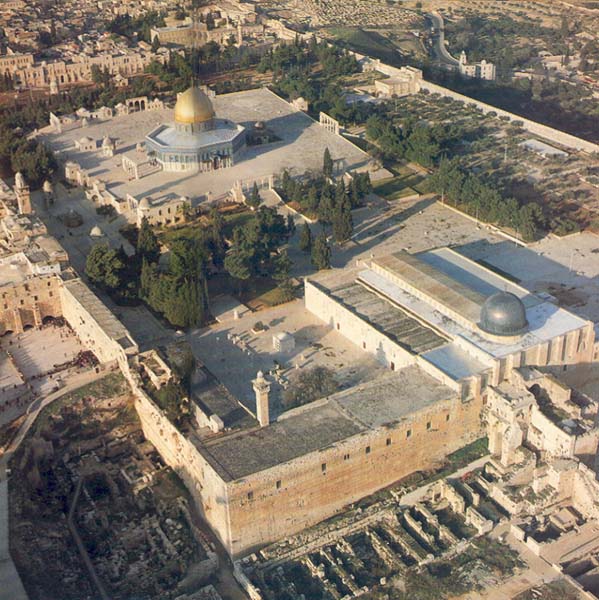
As early as 1968, UNESCO passed its first resolution that “urgently called on Israel to desist from any archaeological excavations in the city of Jerusalem.” Similar resolutions were adopted regularly.
In 1974, the UNESCO director-general dispatched his personal representative to Jerusalem to report on the archaeological situation. Raymond Lemaire, a Belgian professor of architecture and secretary-general of the International Council of Monuments and Sites, arrived in Jerusalem in September 1974 and, according to his report, “enjoyed the full cooperation of the Israeli authorities.” His report concluded that there was no danger to the Al Aqsa Mosque. With respect to alleged methodological inadequacies, the report concluded:
“Perusal of some of the documents prepared gives one the impression that some of the criticisms that have been levelled at the methods used in the excavations are groundless. The excavations are being carried out by a perfectly well-qualified team of experts of various kinds, who are extremely attentive to all aspects and to all the periods of which remains have been found on the site. The same care is expended on the preservation of remains of the Ommiad [Omayyad] palaces as on those of the Herodian period.”
This report had little effect, however. In November 1974 UNESCO condemned Israel in a resolution that withheld UNESCO funds for Israel and effectively expelled Israel by refusing to assign her to any of the five regional groupings through which UNESCO conducted its activities. The condemnation and expulsion of Israel was clearly not on archaeological grounds, but on 024political grounds.
Although Ben-Dov does not discuss this episode in any detail in his book (he says only that Israel was ousted from UNESCO “ostensibly because of our excavation”), the fact is that the dig could have been—and privately was—subjected to criticism on methodological grounds by professional Israeli and American archaeologists. UNESCO’s hectoring and politically motivated ritual condemnation may well have suppressed this legitimate criticism of the dig’s methods. Legitimate criticism of a dig—always controversial among archaeologists—may well have been muted in this case because it would immediately have been used for political purposes, to attack Israel. The private methodological criticism of this excavation was hardly criticism that placed the dig beyond the range of acceptable methodology. It was criticism that could be leveled at other digs and other archaeologists as well. The methodological issues involved, however, were and continue to be the subject of discussion within the profession. But they were perhaps not voiced more loudly at the time because in the then-current political climate such criticisms would be used as a stick to beat Israel.
What were—and are—the criticisms? Here are some. The dig was simply too big. It continued for 12 years throughout the year. Most digs are conducted for a month or two in the summer. Theoretically, there is no reason that a dig cannot operate all year round if it has adequate professional staff and controls. This dig, in the opinion of many archaeologists, did not. As a result, it was poorly supervised, and the careful records of each locus, which are kept at the best excavations, are reportedly unavailable here. Within the profession, it is widely recognized that, using the records kept at this dig, it will probably be impossible to write an excavation report of the kind produced by first-rate excavations. Without such a detailed report, other archaeologists cannot check the Temple Mount excavation results for themselves.
026
Moreover, it is impossible to tell what was missed in the haste to excavate this enormous area. Ben-Dov says he “wanted to conclude this dig in our own generation.” In fact, it was finished in just 12 years, and much information has been lost.
Another criticism is that the excavation did not leave any areas unexcavated. This denies future generations of archaeologists areas to work on at such time that archaeological methodology might be greatly improved.
In five years of excavation, Ben-Dov says 300,000 cubic meters of dirt was removed—a world record, he claims, that will not soon be broken. Some earth was removed by a bulldozer. Here is Ben-Dov’s justification for using a bulldozer, an excavation method most archaeologists regard as anathema, especially in an area like the Temple Mount.
“Working at an accelerated pace produced an appreciable amount of earth and fill that had to be disposed of. For this purpose we called in a bulldozer—after checking through the detritus by sinking a number of investigatory shafts—and thus saved precious time. A bulldozer is the last thing an archaeologist would normally expect to find at a dig, but the experience I had acquired excavating the Belvoir fortress taught me that if its operator is graced with a sensitive soul, and if an archaeologist is stationed permanently beside its scoop, it can be a very helpful instrument. As time went on a quiet revolution took place, and today you can see bulldozers working at many sites.”
Many archaeologists will find it difficult to accept this defense of a bulldozer. Nor would they agree that Ben-Dov’s “quiet revolution” has in fact occurred.
Within the archaeological community, the criticisms of this dig are controversial issues. Assessing their validity is often difficult because the pertinent evidence is voluminous and often unavailable. Few archaeologists really want to get involved in someone else’s dig. It is not very pleasant to be critical of one’s colleagues. Some of the criticisms that have been privately leveled at this dig have also been directed at other digs and other archaeologists. Yet, despite all these reservations, it is not helpful simply to sweep the issues under the rug. Within the profession, this dig has privately been the subject of serious criticism, much more than most.
As if all these problems weren’t enough, near the end of the dig a rift developed between Benjamin Mazar, the distinguished dean of the Israeli archaeological community and director of the excavation, and Meir Ben-Dov, the dig’s field director. The two men are now operating independently, each having seized what records he could. According to most reports, Ben-Dov was the more successful in sequestering excavation records.
In 1969 and 1971 two preliminary reports were published on the first three seasons of excavation. Additional preliminary reports would appear, one would expect, at regular intervals. None has.
In 1975 a book entitled Mountain of the Lordd was published by Mazar “assisted by” Gaalyah Cornfeld, with David Noel Freedman as consultant. The subject was the archaeology of Jerusalem. The book includes materials from the Temple Mount, Mazar’s dig. Reportedly, Mazar was so dissatisfied with the book—he supposedly had little to do with writing it—that he requested that it not be reviewed in the Israel Exploration Journal or the Revue Biblique. It was not.
Now we have a new popular book by Ben-Dov—In the Shadow of the Temple. The Hebrew edition, a bit more modestly and accurately entitled In the Shadow of the Temple Mount, was discussed in a Hebrew Jerusalem newspapere by Dan Bahat, Israel’s district archaeologist for Jerusalem. Bahat characterized Ben-Dov’s book with an expletive unprintable in the pages of BAR. According to Bahat, “the book is a scandal of the first degree.” At a reception for the book’s publication, the archaeological community stayed away in droves. Neither Mazar, the dig director, nor Joseph Aviram, the executive secretary of the Israel Exploration Society, attended. When queried by a newspaper as to why his fellow archaeologists stayed away from the reception, Ben-Dov 027explained that he is “a tiger who hunts alone”—and indeed he is: He has almost no close colleagues in the archaeological community and is generally considered a pariah by the archaeological establishment. He has no university affiliation, and it is safe to predict that the Israel Exploration Journal will either ignore his book or damn it.
Despite all the criticism and controversy that has surrounded this dig and despite all the scorn that has been heaped on Ben-Dov’s book, it is a wonderful reading experience. It is informative, even riveting, not to be missed by anyone to whom Jerusalem is close at heart. The finds are amazing and Ben-Dov writes extremely well—an attribute not common among archaeologists.
In 380 pages Ben-Dov describes the finds from what he claims are 25 strata and 12 distinct periods, beginning with First Temple period tombs from the kingdom of Judah (c. ninth century B.C.) and ending with pottery and pipes from the period of the Ottoman Turks, who ruled the area from the early 16th century A.D. to the early 20th century. No period is neglected or sloughed over.
The most important finds come from the Herodian period (37 B.C.–4 A.D.), followed by the times of the Byzantine Christians (325–637 A.D.) and of the Moslem Omayyads (seventh to eighth centuries A.D.).

Each chapter begins with a masterfully written historical description that provides a setting for the account of the excavation and the finds related to that period.
One of the most exciting discoveries of the dig was a monumental staircase (on the southern side of the Temple Mount) that led up to the two main pilgrim entrances to the Temple area in the Herodian period. Interestingly enough, excavation here was possible only because of the archaeologists’ excellent relationships with the local Moslem leadership and their understanding cooperation. The land in this area belongs to the waqf, the Moslem religious trust. Ultimately, the archaeologists obtained consent to excavate-both from the tenants to whom the waqf had leased the land and from the waqf itself. In Ben-Dov’s words:
“Once again we invited a number of Moslem notables to visit the excavations, and once again they were convinced that the finds relating to Islam, together with the rest of the discoveries enabling us to decipher the secrets of ancient Jerusalem, were of major import. They were also convinced that there was no political motive behind our work and that the charges 028about our desire to undermine the foundations of the Al Aqsa Mosque were totally unfounded. On the contrary, all the structurally weak points around the mosque, which had been neglected for years, were now receiving proper treatment. Many cups of savory coffee were downed during my subsequent talk with the trustees of the waqf, and the conversations rambled from one subject to another, in the best spirit of Oriental hospitality, before we got round to the matter of excavating south of the city wall. Here, again, we spent hours upon hours talking and drinking at a calm, leisurely pace before a contract was drawn up placing areas south of the Old City wall at our disposal for the purpose of excavation, reconstruction, and preservation of the remains.
“Not that the matter ended there. After we began working on the site, certain parties that will here remain unnamed used the agreement as an excuse to vilify a number of Moslem religious dignitaries. One of the qadis who signed the lease with us was even forced to relinquish his post, though he honored his signature and obligations anyway. The judge in question came from one of the leading Palestinian nationalist families of the previous generation (he was a relative of the former mufti of Jerusalem, Haj Amin el-Husseini), and his traditional rivals seized on the opportunity to blacken his name in the local Arab press. Sometime later I met the ex-qadi, who lamented to me, ‘You see, my friend, there are those who sell their land to Jews and their souls to the Devil and no one says so much as a word. But when I lease land for the purpose of a scientific project whose discoveries tell us so much about the Moslem past in Jerusalem and of the kings and prophets whom we, too, venerate, see what happens. Still, you should know that I do not regret what I have done—not one whit. I am old, and in standing before God I am confident that what I did is for the best.’”
The magnificent staircase that was uncovered on the waqf land connected a public square in front of the Temple Mount with the Hulda Gates—entrance and exit gates to and from the Temple platform.

On these steps tens of thousands of pilgrims climbed to the Temple platform. One of them was doubtless Jesus of Nazareth.
Ben-Dov describes a visit to the site by an Ethiopian patriarch:
“The patriarch of the Ethiopian Church happened to visit the dig soon after we had uncovered these steps.
‘Is it possible that Jesus and the Apostles walked up these stairs?’ he asked. ‘There’s no doubt about it,’ I told him. ‘This is the main staircase that led to the Temple Mount, and it was the only one used by pilgrims bound for the Temple.’ Upon hearing my answer, a wave of emotion swept over the patriarch and his retinue, and we paused so that they could offer up prayers on the spot.”
The Hulda Gates opened into tunnels that led up to the esplanade on which the Temple was built. To get to 030the esplanade, pilgrims would walk through the triple gates, enter a sloping tunnel and walk up. To descend, they would walk through another tunnel that sloped down to the double exit gate. Today, these tunnels are under the Temple Mount, and no excavation can be undertaken there.
The Hulda Gates have long been blocked from the outside. The triple entrance is still easily visible, but only a bit of the lintel of the double gate is still exposed. Most of the gate is covered by a medieval building that rests up against the southern wall of the Temple Mount. Both tunnels can be entered, however, from inside the walls, although few Westerners have done so. For more than a hundred years before the recent study reported in Ben-Dov’s book, no Western scholar had studied these tunnels. The Israeli archaeologists requested the waqf’s permission to undertake a new study, and the request, in Ben-Dov’s words, “was readily granted. We were even offered assistance in the form of lighting and ladders.”

The original triple-gate tunnel, known in the New Testament as the Beautiful Gate (Acts 3:2), according to Ben-Dov, had been almost completely destroyed and rebuilt. The double-gate tunnel, however, was in significant part preserved in its original Herodian state. The western gate-post was preserved to a height of nearly 20 feet. According to Ben-Dov, the lintel above the gate-post is probably the original Herodian lintel.
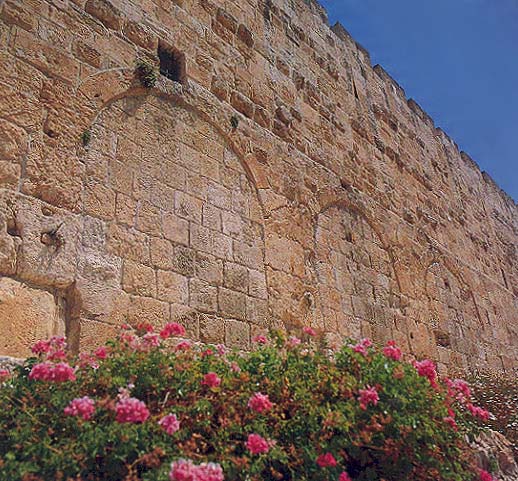
The decorated domes inside the double-gate’s entrance, as well as the inner walls of the tunnel and the 031tunnel’s central pillar are all original, dating to the Herodian period. The walls of the tunnel are built of ashlars worked to a fine smooth finish without margins or bosses (unlike the ashlars used in the facing wall of the Temple Mount itself).
The domes in the ceiling of the gates are over 16 feet in diameter. They are among the earliest surviving domes known to us from classical architecture. These domes were embossed with a variety of floral and geometric decorations that left no open spaces. Nor was there even a hint of an animal or human image—in strict conformity with the Second Commandment’s prohibition of graven images. The predominant floral motif was the vine with clusters of grapes—a symbol of blessing, happiness and productivity. From literary sources, we know that the entrance to the Herodian Temple itself was decorated with a fruited vine motif fashioned entirely of gold. The same motif in the Hulda Gate gives us a clear idea of how this decoration must have appeared on the Temple itself. The flowers in the domes of the Hulda Gate tunnels were originally painted in appropriate colors. Ben-Dov concludes, “Without actually seeing these domes and their ornamentation, it is impossible fully to appreciate Jewish art of the Second Temple period.” Alas, the public cannot enter this area.
In the excavations outside the Hulda Gates, the archaeologists found nearly 300 stone fragments that apparently came from destroyed domes in these tunnels. Although these tunnels are not open to visitors, we can get some idea of what they look like from these fragments and from Ben-Dov’s descriptions and drawings.
Just as Ben-Dov was able to maintain excellent relations with local Moslem authorities, despite their initial objections to the dig, so was he successful with the rabbis. When the Ministry of Religious Affairs itself decided to undertake archaeological clearance north of that part of the Temple Mount’s Western Wall dedicated to Jewish prayer (the Wailing Wall), the rabbis asked Ben-Dov to be their archaeological supervisor. Ironically enough, his study of that area’s most famous and impressive monument—the mighty span known as Wilson’s Arch—led him to redate it from King Herod’s time to the Moslem period—to support a bridge from the Temple Mount across the valley to the Upper City. Although it was originally built in the Herodian period, Wilson’s Arch was apparently destroyed and then rebuilt, most probably by the Moslems.
After the Roman destruction of Jerusalem in 70 A.D., the area around the Temple Mount lay in ruins. The Romans later rebuilt Jerusalem as a Roman camp, renaming it Aelia Capitolina in honor of its founder, the Roman emperor Hadrian, whose full name was Publius Aelius Hadrianus. Roman legionaries camped at the foot of the Temple Mount. A memento of a Celtic cavalry unit—a large figurine of a spear-carrying Celtic soldier seated on his horse—was found in the excavation at 032this level. Another find from this period was a Latin inscription mentioning Titus, who was the conqueror and destroyer of Jerusalem.


In 324 A.D. Jerusalem passed into Christian hands. Jerusalem soon became a pilgrim and tourist center. Ben-Dov tells us that “it was important to the Byzantines that the [Temple Mount] remain in ruins as tangible evidence that Jesus’ prophecy of the Temple’s detruction had been borne out.” The area around the Temple Mount became a residential quarter. Many of the Byzantine houses, especially from the late Byzantine period (early seventh century), have been preserved to the second story and are beautifully reconstructed in an archaeological garden that now adorns the site.
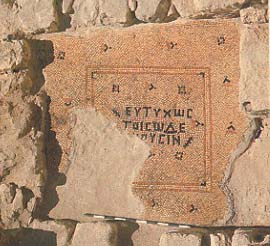
For one brief moment in the Byzantine period, the Jews harbored the illusion that their Temple might be restored. In 361 A.D. the Emperor Julian assumed the helm of the Roman empire. A thorough-going Hellenist, he wanted to restore the glory of classical Rome to the empire. He sought to undo the alliance between the empire and the Church and to re-introduce religious freedom. In pursuit of this policy—and because he wanted Jewish assistance in a military campaign he was planning against the Persians in the east—Julian encouraged the Jews to return to Jerusalem and rebuild their Temple. The Jews immediately made plans, but in 363 Julian was killed and was succeeded by a loyal 033Christian. As Ben-Dov relates, “The wheel of history turned back again.”
From the time of Julian’s brief reign, the excavators uncovered a Hebrew inscription carved into the wall of the Temple Mount—a variant of Isaiah 66:14 expressing hope for the national resurrection of the Jewish people, as well as the resurrection of the dead. It was apparently carved by those who intended, by permission of the Emperor Julian, to rebuild the Temple on the esplanade above: “And when you see this, your heart shall rejoice, and their bones shall flourish like an herb. … ”
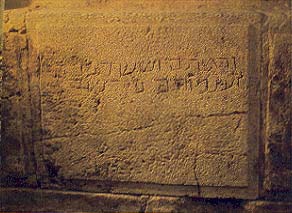
In the late Byzantine period, the houses were more extensive and palatial. In addition to the remains of walls, vaults and stairways, the excavation found pottery, cooking equipment, ovens and even a bathroom with a seat built to hold a chamber pot. Ben-Dov remarks, “This particular toilet did not flush, but in other houses we found the equivalent of flush toilets with pipes leading directly into the sewage system.”
In 614 A.D., the period of Byzantine splendor in Jerusalem ended. The city fell to the Persians. The Persian empire had long been the rival of the Byzantine empire; in the early seventh century, war between these great empires broke out in earnest. As Ben-Dov explains: “In contemporary terms, one could call this confrontation a world war.”
Jewish assistance was important to the Persians in their drive on Palestine.
“The Persians asked for their aid and were rewarded with Jewish support in the form of funds, food, and primarily manpower, as many young Jews flocked to join their forces. In addition, appreciable assistance was profferred by the Jewish community within the Persian Empire itself. The Jews participated in this war not as mercenaries but as a nation with its own stake in the victory, since they regarded the war as a struggle for national liberation . … It seemed almost as if the Messiah’s tread could be heard in the distance, and the entire nation dedicated itself to the battle. When Jerusalem fell to the Persians in 614, the hammering of the stonemasons who would reconstruct the Temple was already echoing in Jewish ears.
“The Christian community of Palestine suffered greatly at the hands of the Persians (as had the Christians of Syria and the other conquered lands), and of the many Christians who were put to the sword, particularly vulnerable were men of the cloth. For Christianity, the official state religion, had been used to advance the political aims of the empire, and the Persians chose not to distinguish between the political regime in the strictest sense of the term and the 035religious functionaries who had incidentally served its ends. The damage to the Christian community was particularly notable in Jerusalem, where two forces joined to wreak havoc: the Persians, who rightly believed the city to be one of the underpinnings of Christianity and of the empire’s strength in the East; and the Jews of Palestine, who harbored a deep grudge over the Byzantines’ general hostility toward the Jews throughout the empire, no less than for the deeds of Justinian and his successors in Jerusalem—and particularly on the Temple Mount. Hence the chronicles of the day are replete with acts of murder, plunder, and wanton destruction.”
Jerusalem was reconquered by the Byzantines in 629.

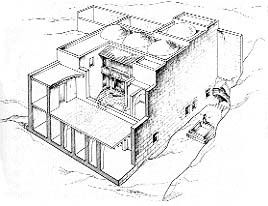
“The return of the Byzantines was a heavy blow to the Jews of Palestine … the stage had been set for a national and religious revival. The Jews could almost see the restored Temple standing before them—and all that it implied. And then, so quickly and abruptly, everything had been reversed. Jewish families that had clung to their faith for generations, despite a policy of bloody persecution and attempts to convert them to Christianity, now abandoned Judaism and converted out of sheer despair.”
The war had changed few boundaries:
“Tens of thousands of lost lives and the harrowing damage to the world economy had brought the sides right back to where they had started. With one major difference: The economic turmoil of the age, particularly among the peoples inhabiting the ravaged outlying areas, and the weakness of the exhausted rival armies practically invited the rise of yet a new rival—the Moslem Arabs. So it was that the Moslem Empire rose in the wake of the relentless clashes between two older, declining powers.”
The Pyrrhic Byzantine victory was short-lived. In 638 the Arabs entered Jerusalem and received the surrender of the city from the local patriarch. Thus began Moslem rule.
From the few years of Persian rule and from the few years of Byzantine rule after that, the excavators found houses decorated with Jewish symbols, including seven-branched candelabra (menorot), palm branches (lulavim) and ram’s horns (shofarot). In the doorpost of one of the buildings, a niche was carved to hold a mezuzah, a small case holding a parchment inscribed with two passages from Deuteronomy. (Mezuzot can still be found in Jewish homes today, in fulfillment of the Biblical command to place these words on the doorposts [mezuzot] of your gates [Deuteronomy 6:9; 11:20].) But this same house 036bore on its lintel a cross, a reflection of a previous inhabitant’s faith.

In the late seventh century and early eighth century, the Omayyad Moslems built the Dome of the Rock and Al Aqsa mosques on the Temple Mount. Ben-Dov calls these structures the “two jewels and among the earliest achievements of Moslem architecture.”
The origins of these magnificent buildings are obscure, however, because the Abbassid dynasty that succeeded the Omayyads attempted to obliterate not only all members of the preceding dynasty but all records of their achievements as well.
It was the Omayyads, however, who established Jerusalem as a Moslem religious center. Their primary purpose was geopolitical. Their center of power was Syria and Palestine, not Arabia. To buttress these geopolitical considerations, a religious justification was needed to make Jerusalem a Moslem center. In the Koran, Ben-Dov tells us, every detail but one in Mohammed’s life has a specific address. The sole exception relates to Mohammed’s night journey on the back of a wondrous animal—half horse, half man—named Burak (Lightning). Mohammed rode Burak to the “outer mosque” where the angel Gabriel raised Mohammed on his horse up to heaven to meet Moses, Elijah and Jesus. The location of the “outer mosque” is not clearly identified in the Koran. Many scholars believe the reference is to the outer mosque in Medina. But in the Omayyad period, the tradition developed that the outer mosque was in Jerusalem. Thus a rationale was provided for constructing Al Aqsa Mosque, which means “the outer.” The rock mass beneath the Dome of the Rock is said to bear Burak’s hoofprint as he pushed off on his ascent to heaven.
Ben-Dov notes that a similar phenomenon occurred in the development of Jewish tradition. When King David made Jerusalem the capital of his kingdom in about 1000 B.C., it too needed the enhancement of a 037religious consecration, especially since the Temple to house the Ark was to be built there. Like the Koran, the Bible assigns a specific location to most events. But there is no location specified for Mt. Moriah, where Abraham offered to sacrifice Isaac. So the tradition arose that the rock mass on the Temple Mount, now inside the Dome of the Rock, was the very spot on Mt. Moriah where Abraham, in obedience to God’s command and to show his complete devotion, drew his knife to sacrifice his son Isaac and was stopped by the angel of the Lord (Genesis 22).
At the foot of the Temple Mount, the archaeologists found one of the many surprises of the dig. During the Omayyad period, the Moslems had built a series of magnificent palaces in this area, right over the ruins of the Byzantine houses. These impressive Omawad structures have been preserved in the archaeological garden that now covers the site. Because the palaces were built by the Omawads, the Abbassid histories omitted all reference to them, so they were completely unknown until excavated by the Israelis.

Interestingly enough, excavations in this area had been conducted in the 1960s on behalf of the Jordanian Department of Antiquities in order to decide whether a school could be built on the site. These excavations were directed by two of the world’s foremost archaeologists, Dame Kathleen Kenyon of the British School of Archaeology and Père Roland de Vaux of the French École Biblique. However, they limited themselves, as their methodology required, to several small squares. They mistakenly identified the walls of an Omayyad palace as Byzantine. King Hussein therefore concluded that the school could be built on the site. The plan was aborted by the Six-Day War in June 1967.
Ben-Dov is critical of Kenyon and de Vaux’s methodology:
“The sad fact is that not only did these scholars fail to define the plan of the structure because of the limited scope of their excavations, even their dating of the remains was wrong … I realized that our excavation in the vicinity of the Temple Mount would have to be conducted very differently from the approach taken by Kenyon and de Vaux. The only way to achieve reliable results would be to dig up the whole area.”
Ben-Dov explains his own methodology:
“We began to expose the area by conducting the excavation on two planes. One was horizontal, meaning the investigation of broad, single-stratum areas. The other was vertical by means of sinking a shaft at the periphery of the area and going down through several strata in order to tentatively identify them and plan the continuation of the dig downward. Based on this thinking … I called in a bulldozer and put it to work. With the heavy equipment backed by the efforts of hundreds of laborers and volunteers, within a relatively short time we had opened up the western area below the southern wall and realized that it was occupied by a single immense building. All the exposed walls, including the sections discovered by Kenyon and de Vaux, belonged to one and the same structure: an almost perfectly square 2-acre building that was flanked on the north by a broad paved street.”
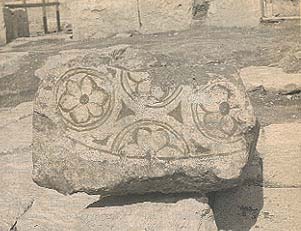
The building itself—an Omayyad palace—had been coated with white plaster and had been painted with lovely frescoes and beautifully embossed stones—“an edifice of unusual splendor.” Unfortunately, only fragments of the decorations survived. A bridge led from the palace to the Al Aqsa Mosque on the Temple Mount, so the palace probably belonged to the caliph himself.

Ben-Dov concludes his account of this discovery:
“For 1,200 years the remains of these Omayyad buildings awaited their redemption. For 1,200 years the Abbassids succeeded in their mission of wiping out all trace of the Omawad enterprise in Jerusalem, but now the archaeologist’s spade had brought them to light. It is one of the ironies of this city’s history that this remarkable discovery was made by Israeli archaeologists, while King Hussein—a scion of the Hashemite dynasty, which traces back to the family of the prophet Mohammed—was responsible for further 038burying all trace of this glorious palace by building yet another structure over its ruins in the belief that they were the remains of a Christian building.”
Ben-Dov proceeds to trace the history of the site in the days of the Abbassids, the Fatamids, the Seljuk Turks, the evidence of Jewish pilgrims, the Crusaders, the Mongols, the Mamelukes. Then, probably in the Ottoman period, a long, enclosed market or bazaar was built south of the Temple Mount, containing small shops. Stone troughs for feeding sheep and goats were found in some of the stalls. So the area remained until the end of the 19th century when the marketplace shifted. Then the area became partly the city dump and partly agricultural land, marked off with small vegetable plots—until the excavation that led ultimately to the archaeological garden that now covers the site.
There is much to criticize in Ben-Dov’s book. Most important is that the author’s archaeological conclusions often come down to mere assertions: He says they are so; we must accept them on faith. His reconstructions are sometimes unsupported by evidence. Too often we want to know more of his reasoning and more of the evidence. This is especially true regarding many of the controversial matters Ben-Dov discusses. As to these, Ben-Dov usually omits discussion of other views and sometimes even fails to note that there are other views.
For example, the mysterious word millo, which is referred to in Samuel, Kings and Chronicles and is usually untranslated, in fact denotes, we are told, the earth fill south of the Temple Mount that Ben-Dov removed (with a bulldozer!). Kathleen Kenyon argued, perhaps more persuasively, that millo referred to the stone terraces that supported structures further south on the eastern slope of the City of David. More recently, the stepped-stone structure excavated by Yigal Shiloh has emerged as a candidate for the millo.f But none of these other possibilities is mentioned in Ben-Dov’s book.
In the second century B.C., the Seleucid king Antiochus IV (Epiphanes) ravaged Jerusalem and desecrated the Temple in his effort to impose Hellenism on the Jews. To control the Jews and their activities on the Temple Mount, Antiochus built a mighty fortress called the Acra. When the Jews regained their freedom at the time of the Maccabean revolt, the Jewish rulers (Hasmoneans) razed the hated Acra to the ground. Its location has long been a matter of intense scholarly dispute. Ben-Dov claims to have excavated remains of the Acra just south of the Temple Mount. But we are given very little of the evidence. Is he correct in his claim? He does mention that there are other theories, and he considers and rejects the suggestion of his friend Yoram Tsafrir (whom he does not name). But the discussion is so incomplete that the reader cannot reach his or her own conclusion.
Perhaps the greatest church of the Byzantine era was the famous Nea, lost to history for 1,400 years. Just inside the Old City walls, Nahman Avigad, one of Israel’s most highly regarded archaeologists, found unmistakable remains of the Nea. Ben-Dov claims to have found part of an apse of the Nea extending outside the Old City wall. The two men disagree on the precise location of the church, its plan, and the interpretation of the remains. Ben-Dov makes no mention of Avigad’s interpretations.
Ben-Dov will reply to these charges of omission—with considerable validity—that there was simply no room to go into further detail. The book is already 380 pages. In his introduction, he confesses that when he agreed to write the book he had no idea how difficult it would be to include everything in a single volume. As it is, the publisher agreed to extend “the book’s length to a third more than originally planned.”
Moreover, it is in the nature of popular books not to give the detailed evidence. This is no less true of Yadin’s popular books, or more recently, of Nahman Avigad’s Discovering Jerusalem, in which he summarizes his own excavations in the Jewish Quarter of Jerusalem’s Old City.g
In short, the criticisms of Ben-Dov’s conclusions will have to be thrashed out in the scholarly journals. But can this occur before the scientific report is published? And when, if ever, will this report come out?
There are other criticisms. Professional archaeologists will point out the many errors in details and even in plans, as well as the inconsistencies and omissions. There is no index or list of illustrations—again probably because of lack of space. There are no footnotes and only rare citations to sources.
Roman legionaries are called legionnaires. Father Bargil Pixner is referred to as Father Bargil Fixner. On one occasion, Aelia Capitolina is referred to as “Aelia Capitolonia.” The author fails to mention that it was the excavation architect, Brian Lalor,h who first suggested that Robinson’s Arch supported a monumental stairway, rather than a bridge.
But all this is caviling. Ben-Dov’s book is a splendid one, despite its deficiencies. There is an enormous amount of material here—beautifully illustrated, often in color—that can be found nowhere else. For this, we must all be grateful. And the story is told very well indeed—with engagingly written historical background and an exciting, even suspenseful way of relating the finds and their interpretation. Ben-Dov asks meaningful questions of his material and vividly brings the past to life, giving the reader an exciting sense of “You are there.”
It should have been the jewel in Israel’s archaeological crown. In fact, Israel’s excavation of the area adjacent to Jerusalem’s Temple Mount, on the south and southwest sides of the sacred precinct, has been the subject of continuing controversy and criticism. Excavation results have been spectacular, true, but they fall short of what might have been—indeed, what should have been. 022 Even before pickax broke earth, resistance to the excavation came—this will seem ironic only to the uninitiated—from Israel’s twin-headed Chief Rabbinate. But for this resistance, the dig might have begun at the so-called Wailing, or Western, Wall […]
You have already read your free article for this month. Please join the BAS Library or become an All Access member of BAS to gain full access to this article and so much more.
Already a library member? Log in here.
Institution user? Log in with your IP address or Username
Footnotes
“Sephardi” designates the community of Jews that traces its ancestors to Spain, southern Europe and North Africa.
“Ashkenazi” designates the community of Jews that descends from Jews dispersed in Russia and eastern Europe.
See “Has Jerusalem’s Millo Been Found?” BAR 08:04, and
See “Jerusalem Flourishing—A Craft Center for Stone, Pottery and Glass,” BAR 09:06, by Nahman Avigad and “Jerusalem in Flames—The Burnt House Captures a Moment in Time,” BAR 09:06. See also Philip J. King’s review of Discovering Jerusalem: Recent Archaeological Excavations in the Upper City by Nahman Avigad in Books in Brief, BAR 09:06.

